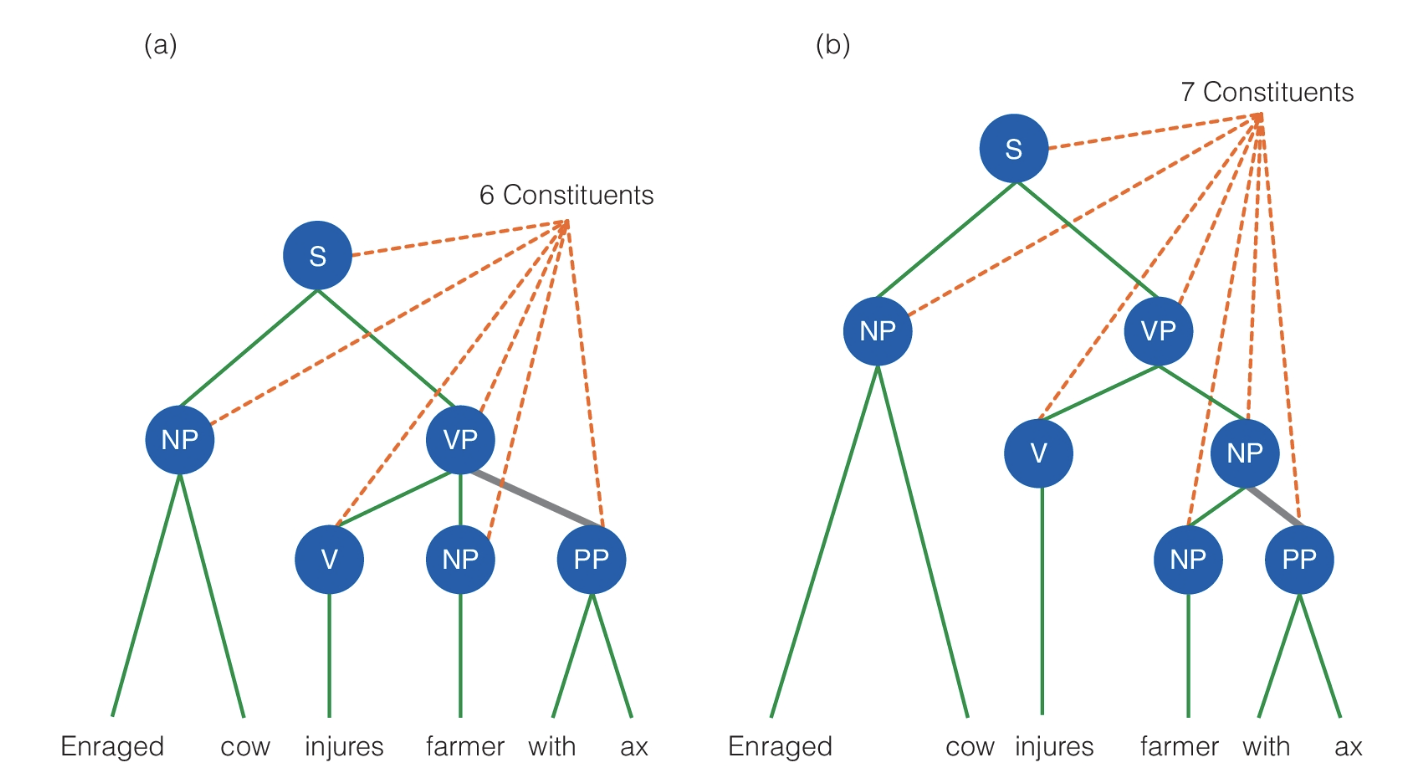
Textbook Notes
8.1 What is Language?
Primary Function: Communication between individuals - exchanging information
Production - [definition] [brain region]
Comprehension - [definition] [brain region]
Broca’s Aphasia → A deficit in language production due to damage in the left inferior frontal gyrus, that results in broken speech - slow, effortful, and halting, lacking in most grammatical words - Also known as expressive aphasia
Wernicke’s Aphasia → A deficit in language comprehension due to damage to the posterior part of the superior temporal gyrus, that results in impaired language comprehension.
Language Structure
Form
Form (Phonology and Orthography) → The most basic form of language is made up of elements of sounds (phonology) and images (orthography)
Phonology → Basic elements of sounds of a language → vibrations in the air that we hear
Phonemes → Distinct sound units that comprise a language (e.g., vowels and constants)
Languages often have rules for putting these phonemes together to form syllables (i.e., putting ‘p’ and ‘t’ together in caption)
Orthography → Basic visual elements of letters that make up written language (specifically the relationship between phonemes and graphemes, or letters) → lines and curves
Morphology → Words and how they are formed - The point at which form, syntax, and semantics information interact
Words aren’t just letters and sounds but may also be a combination of pieces that convey grammatical information
Morpheme → The smallest unit of language that conveys meaning in spoken language or grammatical properties in written language
Free Morphemes → Morphemes that can stand alone (e.g., cow, text, book, foot, ball)
Bound Morphemes → Morphemes that must be attached to other morphemes (e.g., the plural -s)
Example: ‘cow’ is a single morpheme vs ‘cows’ has two morphemes (‘cow’ + ‘s’). Cow provides information about the object and -s adds meaningful information (there’s more than one)
Meaning
Also known as Semantics
Grammar
Also known as Syntax
Syntax → The grammatical rules for the structure of a language - how we order the words and phrases of our sentences
Syntactic structure specifies how words are related, not by meaning but by the grammatical properties of the words
Basic Structure for English →
Sentence made up of a noun phrase and a verb phrase [S: NP + VP]
Noun Phrase made up of a noun that may be modified by an article, an adjective, and a prepositional phrase [NP: (art) (adj) N (PP)]
Prepositional Phrase made up of a preposition followed by a noun phrase [PP: Prep + NP]
Surface Structure → Linear ordering of words
The underlying syntactic structure is not simply the surface structure. There can be multiple underlying meanings attached to the same surface structure
e.g., “Enraged cow injures farmer with ax”
Does the farmer or the cow have the ax?
Same surface structure, but different syntactic structure

Use
Use - Pragmatics
Hierarchical Relation: Dialogue → Sentences → Phrases → Words → Letters → Sounds
Textbook Notes
8.1 What is Language?
Primary Function: Communication between individuals - exchanging information
Production - [definition] [brain region]
Comprehension - [definition] [brain region]
Broca’s Aphasia → A deficit in language production due to damage in the left inferior frontal gyrus, that results in broken speech - slow, effortful, and halting, lacking in most grammatical words - Also known as expressive aphasia
Wernicke’s Aphasia → A deficit in language comprehension due to damage to the posterior part of the superior temporal gyrus, that results in impaired language comprehension.
Language Structure
Form
Form (Phonology and Orthography) → The most basic form of language is made up of elements of sounds (phonology) and images (orthography)
Phonology → Basic elements of sounds of a language → vibrations in the air that we hear
Phonemes → Distinct sound units that comprise a language (e.g., vowels and constants)
Languages often have rules for putting these phonemes together to form syllables (i.e., putting ‘p’ and ‘t’ together in caption)
Orthography → Basic visual elements of letters that make up written language (specifically the relationship between phonemes and graphemes, or letters) → lines and curves
Morphology → Words and how they are formed - The point at which form, syntax, and semantics information interact
Words aren’t just letters and sounds but may also be a combination of pieces that convey grammatical information
Morpheme → The smallest unit of language that conveys meaning in spoken language or grammatical properties in written language
Free Morphemes → Morphemes that can stand alone (e.g., cow, text, book, foot, ball)
Bound Morphemes → Morphemes that must be attached to other morphemes (e.g., the plural -s)
Example: ‘cow’ is a single morpheme vs ‘cows’ has two morphemes (‘cow’ + ‘s’). Cow provides information about the object and -s adds meaningful information (there’s more than one)
Meaning
Also known as Semantics
Grammar
Also known as Syntax
Syntax → The grammatical rules for the structure of a language - how we order the words and phrases of our sentences
Syntactic structure specifies how words are related, not by meaning but by the grammatical properties of the words
Basic Structure for English →
Sentence made up of a noun phrase and a verb phrase [S: NP + VP]
Noun Phrase made up of a noun that may be modified by an article, an adjective, and a prepositional phrase [NP: (art) (adj) N (PP)]
Prepositional Phrase made up of a preposition followed by a noun phrase [PP: Prep + NP]
Surface Structure → Linear ordering of words
The underlying syntactic structure is not simply the surface structure. There can be multiple underlying meanings attached to the same surface structure
e.g., “Enraged cow injures farmer with ax”
Does the farmer or the cow have the ax?
Same surface structure, but different syntactic structure

Use
Use - Pragmatics
Hierarchical Relation: Dialogue → Sentences → Phrases → Words → Letters → Sounds